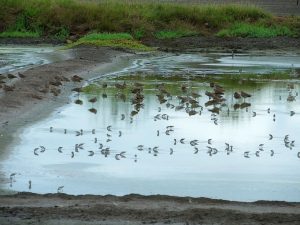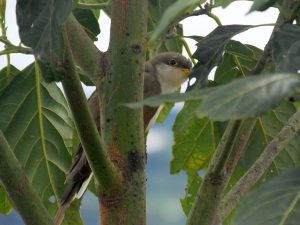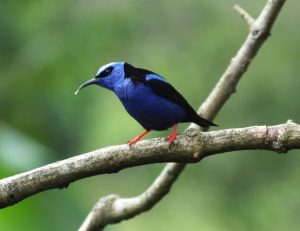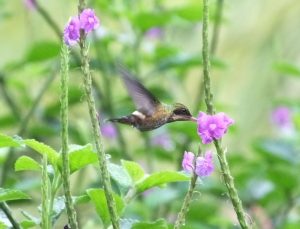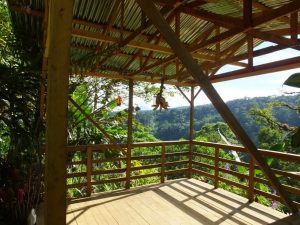Hurricane Otto stormed its way through northern Costa Rica last Friday. The good news is that despite the worries and concerns, most parts of the country were spared the heavy rains and winds that make up the destructive bread and butter of a hurricane-strength storm. In the Central Valley, the weather was weird, foggy, and punctuated with occasional drizzles but the main body of the storm clearly missed us. The same can be said about most other parts of the country, even in many of the emergency, red-zone areas such as Monteverde and San Carlos.
Hurricane day from my window.
But now for the bad news. The northern border zone did indeed experience the heavy rains and high winds of a hurricane, especially in the Upala and Los Chiles areas. Liberia also saw some of the heaviest rains it has ever experienced, and electricity was out along most of the storm’s path. It sounds like Upala saw the worst of it because the river overflowed its banks, flooded the town, and destroyed many homes and businesses. A few people also perished from the flooding there and in the town of Bagaces. The bright note is that thousands of folks immediately pitched in from around the country to help and support the people of Upala and other affected areas. Hopefully, their homes and businesses can be rebuilt as soon as possible.
As far as access goes, roads and bridges are probably out or affected in areas near Upala and probably other places up north. If you plan on staying anywhere near Upala, Bijagua, or other sites near the northern border during December, it would definitely be wise to contact those places first to see if they are up and running and if they can be reached by road. Most probably can but it would be worth it to check first. In the rest of the country, it sounds like most roads are open, and far fewer were affected by landslides than was expected. The exception to that is the area around Ciudad Neily near the border with Panama. There has been a lot of flooding down that way and I doubt that the Coto wetland area is accessible.
On the birding front, so far, nothing crazy has turned up and I doubt that much will be found. The hurricane didn’t really pass through an avian rich zone, nor any major islands before reaching Costa Rica, and I assume that species like Gray Kingbird, White-crowned Pigeon, and the very local San Andres Vireo are adapted to hurricanes and thus less likely to leave cover when the storm comes through. Factor in lots of places for birds to hide along with little birding coverage and coming across any of those few rare vagrants will be like finding a microscopic needle in a haystack. With that in mind, it will be interesting to see if any unexpected species are found during this weekend’s bird count at Arenal.
On the waterbird front, it’s more likely that some of those were blown off course and maybe even right over to the Pacific. A pretty good sign that this has happened are reports of a few Sandwich and Elegant Terns from an inland reservoir. Once again, with several people actively birding the Arenal area, maybe a few interesting water birds will be found on Arenal Lake? Although I wasn’t able to head down and check the lake on Sunday, I did check the Tarcoles Estuary, Punta Morales, and Puntarenas. I would have also checked Chomes but the road to the ponds was too muddy for my little car. So, there might have been something really good in there, but even a Sooty Tern wouldn’t have been worth getting my car stuck in the salt pond oven known as Chomes. At least the road in to the village was in excellent condition. It was being graded and gave up views of 20 thick-knees, a usual, distant Harris’s Hawk, an equally distant wintering kestrel (pretty uncommon in Costa Rica), and a few other birds including my year Spot-breasted Oriole.
Punta Morales.
Over at Punta Morales, shorebirds were in good numbers but nothing unusual and rather low diversity. It was a similar scene over in Tarcoles, and the waters off of Puntarenas were fairly bird-less. I was hoping for a flyby storm-petrel (or flyby anything for that matter) but no luck there. Although I didn’t come across any crazy rarity, I’m still glad that I was out there looking for them, and a morning of bird song on the Bijagual road is always a good one in any case!
This Rufous-tailed Jacamar was one of several species seen and heard during dawn on the Bijagual Road. My eBird list.


